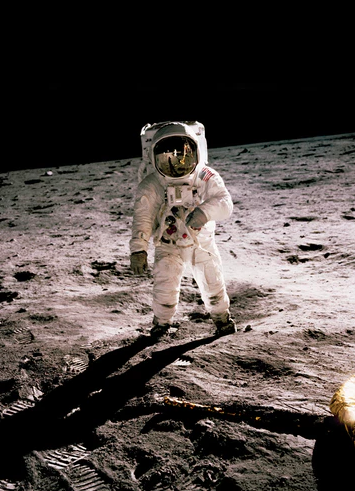Culture March 27, 2020
One small step for man, one giant leap for government mistrust.


NASA faked the moon landing. This is just one popular conspiracy theory among many circulating around The U.S. Most theories are deeply rooted in important historical events. Most of them have been ‘debunked’ by scientists and professionals in the specific related fields. So why do people still hold to the theories? What is it about conspiracy theories that makes people ready to discount scientific fact? Let’s dig into it.
The Apollo 11 landed on the moon in 1969, more than 50 years ago. Years later, theories started spinning about NASA staging the whole thing. Ideas even point to Stanley Kubrick (writer and director of “2001: A Space Odyssey”) as the mind behind the video footage. What happened between 1969 and the first whispers of conspiracy in the mid-1970s? And why have Moon Landing conspiracy theories persisted to this day?
In 1974, Bill Kaysing published “We Never Went to the Moon: America’s Thirty Billion Dollar Swindle.” Many consider this publication to be the seed that sprouted theories circulating today.
But Kaysing’s publication never would have taken off in the optimistic attitude of the 60s. The timing of its release was essential. ABC News reported, “Speculation about the moon landing in the late 1970s came at a time when trust in government was starting to dip”. Pew Research Centre’s data shows that in 1964, trust in government was at an all-time high, at 77%. By comparison, in 1970, the year after the moon landing, public trust in the government had lowered to 54%.
It’s not surprising that the public resists the scientific evidence debunking the conspiracy theories. They don’t trust the institutions providing the evidence! This also speaks to why people are holding on to the same theories today. The same Pew research shows that public trust in the American government has been sitting at record lows, recorded at a whopping 17% in 2019.
Satire or not, pop culture references to the moon landing hoax remind the public that the theory exists. In 1972, James Bond broke into NASA and raced across a moon-like surface, complete with earthbound astronauts, in “Diamonds Are Forever.” The scene may have been meant as a visual joke, but it opened the door for more serious references. One article from The Guardian debunking moon landing conspiracy theories comments:
“By the time of Peter Hyams’ Kaysingian conspiracy thriller Capricorn One (1978), the idea that the government was fooling everyone was no laughing matter. Here it’s about a Mars mission that goes wrong. The authorities opt to fake it and kill the astronauts (one of whom is played by OJ Simpson) to prevent them revealing the truth.”
Other pop culture references include the documentary “Room 237”. It delves into theories of hidden messages in Stanley Kubrick’s “The Shining” and, “includes one person who advances a theory that The Shining was Kubrick’s confession that he’d helped pull off the fakery.”
Fox News dragged he theory into the 21st century with the 2001 documentary “Did We Land On The Moon?” hosted by the X-Files’ Mitch Pileggi. Since then, TV shows such as “Futurama,” “Arrested Development,” “Friends,” and the 2014 film “Interstellar,” have all referenced the theory.
No wonder the theory hasn’t gone away: people keep bringing it up in mass media.
Last but not least, the psychology of why people buy into conspiracy theories in the first place. In a fascinating paper entitled, “Belief in conspiracy theories: Looking beyond gullibility”, Douglas, Sutton, and Cichocka argue that believers in conspiracy theories aren’t just gullible. Instead, “conspiracy theories seem to appeal to people when they need to satisfy important psychological motives.” (2017)
The explanation zeroes in on three psychological motives: epistemic, existential, and social. Simply put, belief in conspiracy theories is driven by three desires. The first is the desire for “understanding, accuracy, and subjective certainty” (Douglas, Sutton, Cichocka, 2017). Second is the desire to have control over one’s environment and to have security. Thirdly, “the desire to maintain a positive image of the self or group.” (Douglas, Sutton, Cichocka, 2017).
When asked specifically about moon landing conspiracy theories, Karen M. Douglas said:
“I think that similar needs apply to this type of theory, like most others (even flat earth some degree). There is also a deep mistrust of officialdom that can explain the popularity of many conspiracy theories.”
You can read more on the psychology of conspiracy theories here, and here.
When all’s said and done, the moon landing hoax theory may be out there, but it’s not the craziest idea being thrown around lately. Did you hear the one about 95% of Americans supporting President Trump’s message? Maybe we should give moon landing hoax theorists more credit. What do you think?